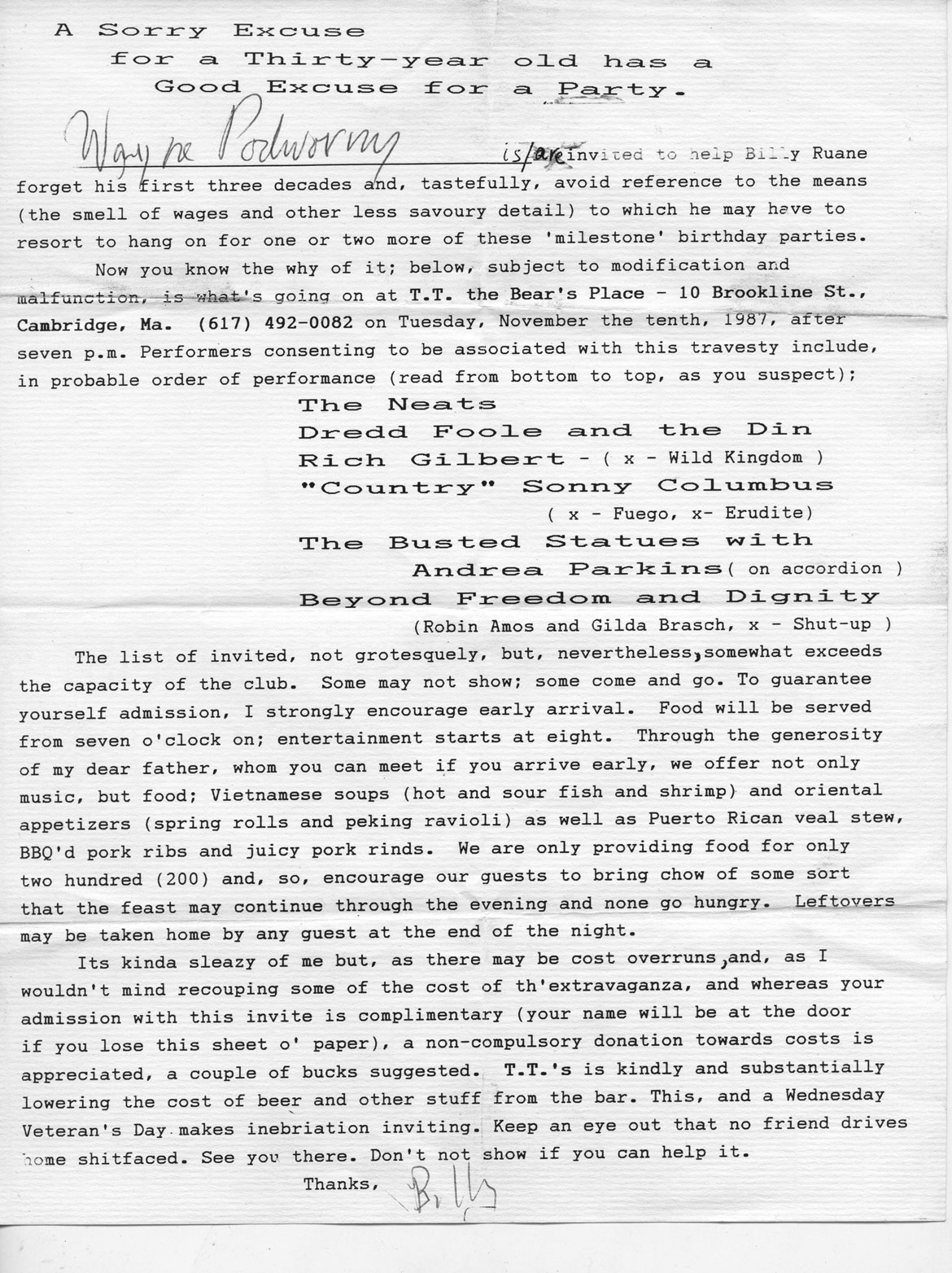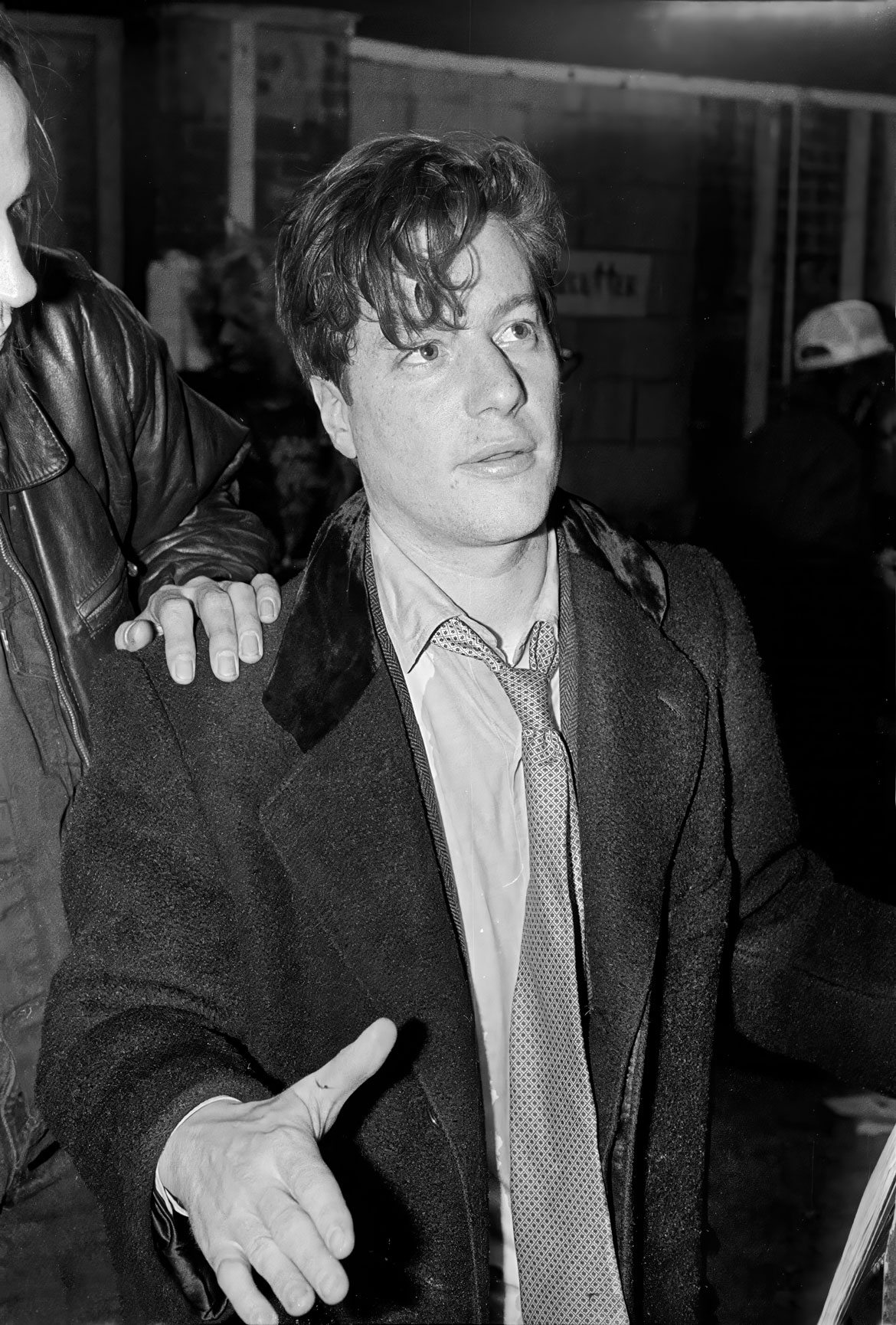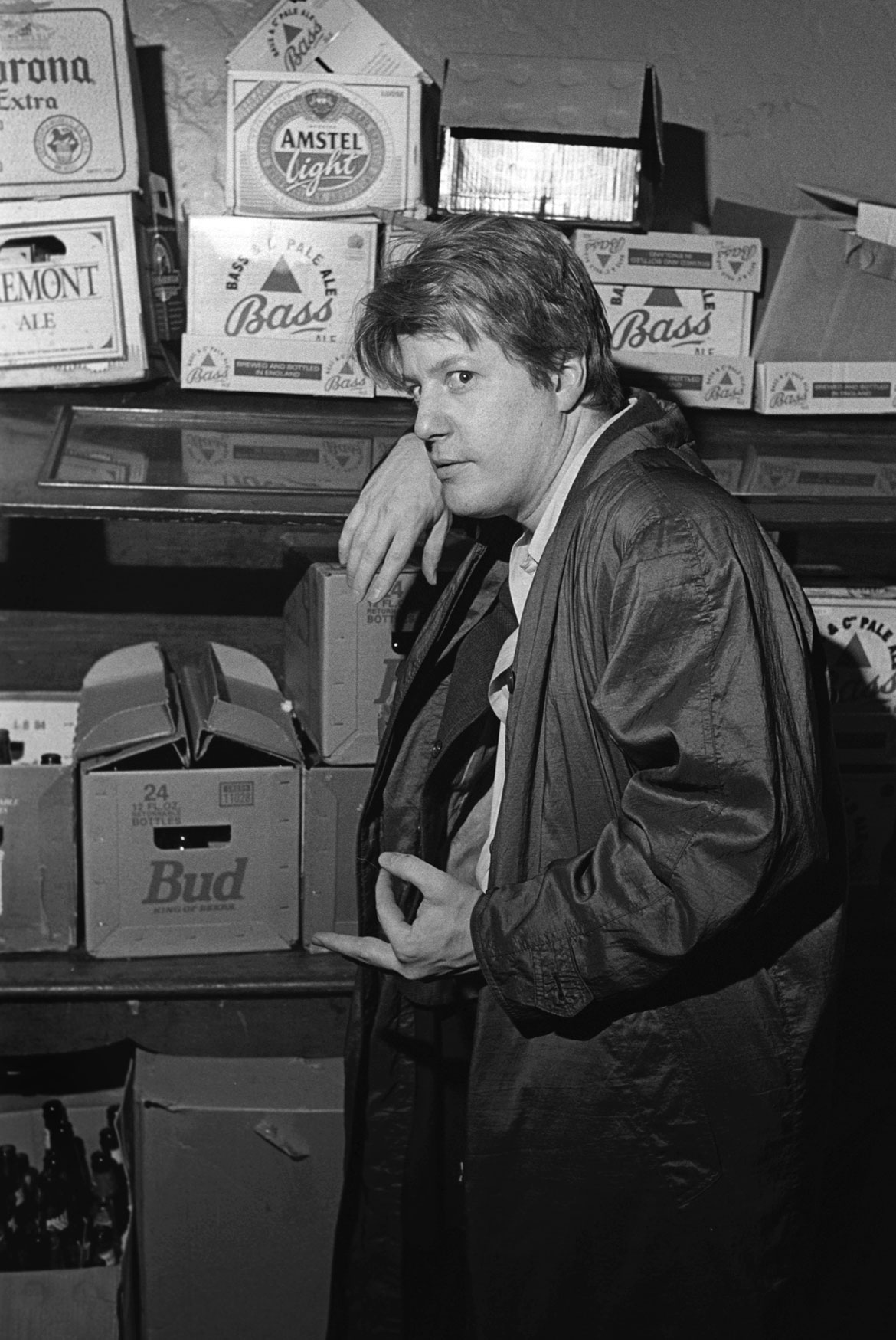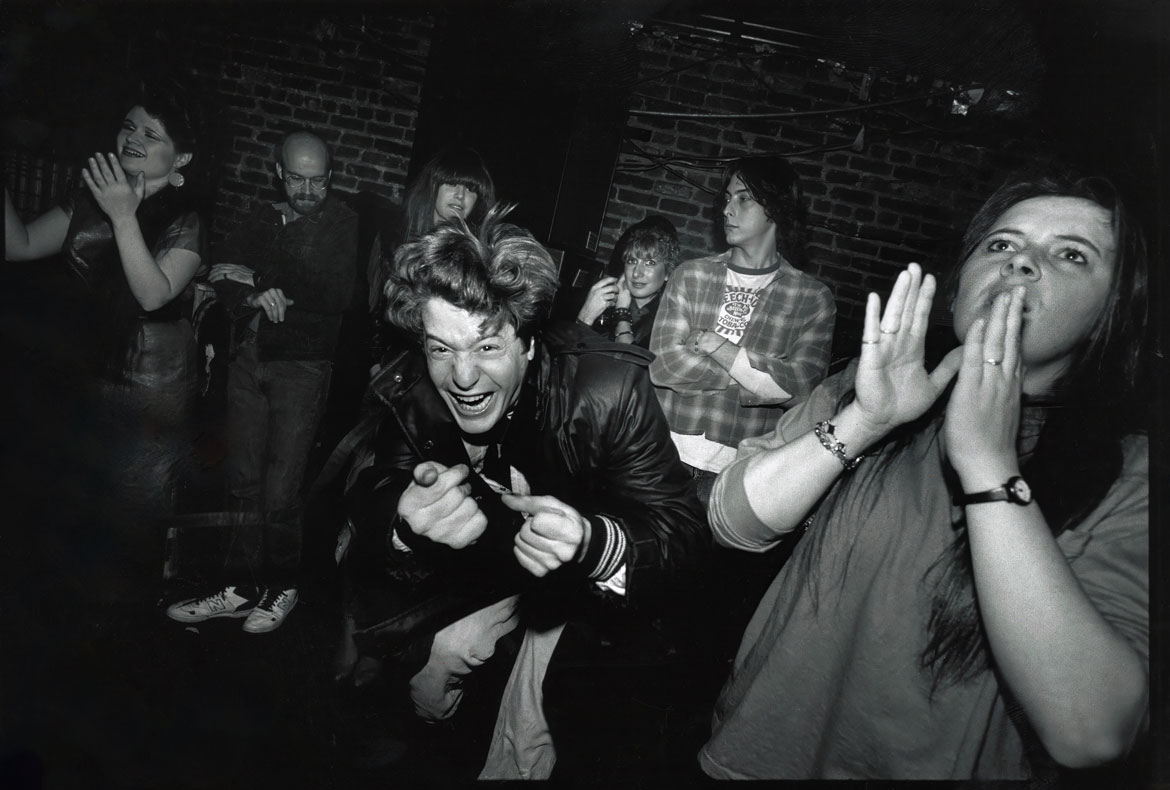“Billy Ruane walked into the room and he said, ‘I need an extra room for my birthday party. I think I overbooked it,’” Joseph Satar, co-owner of Cambridge’s Middle East Restaurant and Nightclub, recalls in the new documentary “The Road to Ruane,” which debuts at the Somerville Theatre on May 4 as part of the Independent Film Festival Boston. (“A filmmaker’s journey to capture the storied life of ‘90s indie music impresario Billy Ruane, becomes an examination of the human condition.”)
On Nov. 10, 1987, Ruane was turning 30, and to celebrate, in his typically dazzlingly excessive fashion, he’d booked a bunch of bands to play at T.T. the Bear’s Place in Cambridge’s Central Square. “He just invited the whole Boston community,” says Scott Evans, who directed and produced the film with Mike Gill.
As it dawned on Ruane how many folks were coming “to help Billy Ruane forget his first three decades,” he asked if the crowd could overflow to the Middle East next door. In the film, Satar recalls, “I said, ‘Billy, I can’t do that. You’ll ruin my place.’” Ruane pressed, until Satar said yes, “assuming I’d calm him down and I’ll tell him that I cannot accommodate him. Obviously nothing will work the way you plan with Billy.”
The Middle East, then known for its falafel and kebabs and for hosting belly dancing and Greek music, did host Ruane’s birthday extravaganza overflow. “After that he wanted to keep going, so we gave him a Tuesday night,” Satar told The Boston Globe in 2000, “and he started bringing rock and blues and jazz bands in. At the time we didn’t sense this could turn into anything.”
“After the party was over, people said, ‘What’s next?’” Ruane told the Globe in 1988 after he started booking his Helldorado shows with Greg Kendall and Joe Harvard in the back room of the Middle East Cafe that January. “I believe you want to keep things a little off-balance. We have a refuge here. I see what we’re doing as more generative than passive.”
“After the birthday party,” Todd Philips of Juliana Hatfield Three and Bullet LaVolta says in the film, “the Middle East literally became the epicenter of Boston music.”
A Moment Of Ecstasy
“The Road to Ruane” is terrific and freaky and heartbreaking and thrilling—like Billy Ruane himself. He was born Nov. 10, 1957, and grew up in New York and at his family’s Connecticut farm. He wore sport coats and ties and rode horses and studied at Cambridge School of Weston then Harvard Extension School.
As a teen, he frequented Boston’s Rathskeller nightclub (the Rat). “He started off being just this wild figure that would go to these hardcore shows and slam around with a beer in his hand somehow without spilling a drop,” Evans says.
“Everywhere I seemed to go there was that guy,” from Ravi Shankar to Max Roach to Big Mama Thornton, his longtime friend Pat McGrath, who helped him manage his affairs, recalls in the film.
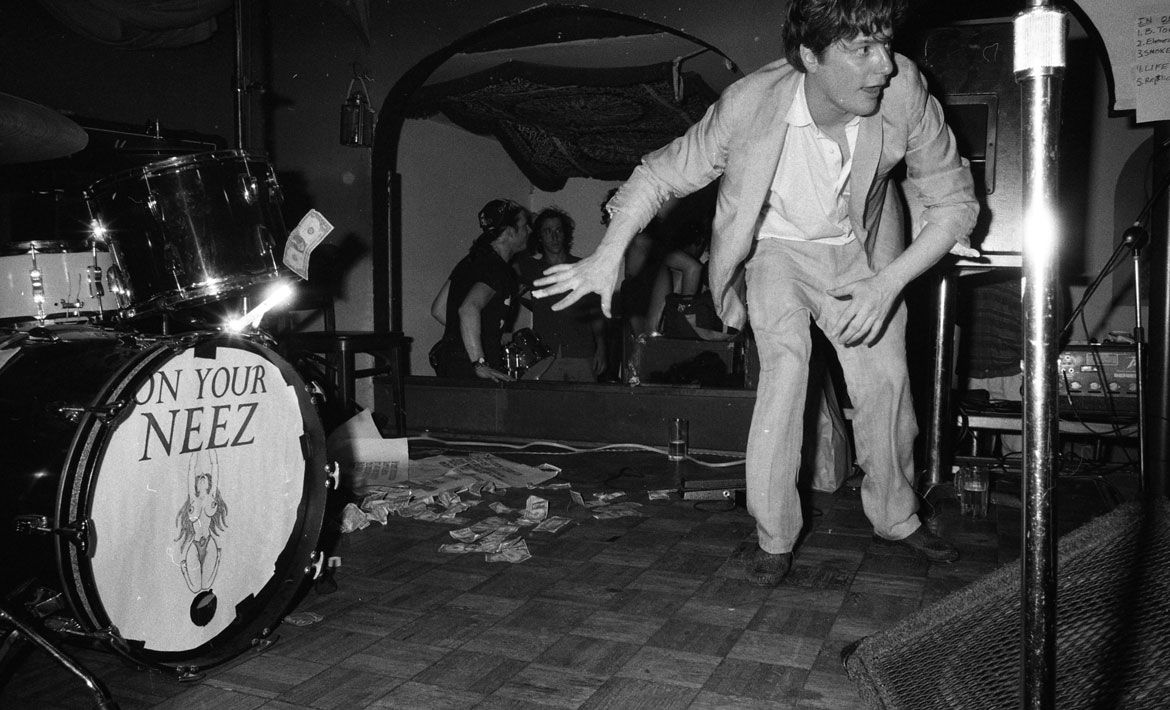
“Mankind is a product of evolution, but some people evolve at a greater rate, and these people are musicians,” Ruane was quoted in the Boston Phoenix when he died. He was revered for his musical taste—evident in the bands he booked at the Middle East, Johnny D’s, The People’s Club, Green Street Grill. “He was really supportive of and championing all these bands early in their career,” Evans says—Amanda Palmer of The Dresden Dolls, Mary Lou Lord (“She was playing in the subway when he gave her her first show”), The Lemonheads, Morphine, Buffalo Tom, early bands of Dinosaur Jr.’s J Mascis. Nirvana’s Kurt Cobain stayed with Lord at Ruane’s apartment the night before the band’s breakthrough 1991 album “Nevermind” debuted. (The film also includes interviews with Thurston Moore of Sonic Youth, Kay Hanley of Letters to Cleo, Peter Wolf of The J. Geils Band, and numerous others.)
Ruane was brilliant and charismatic and unhinged and exasperating and his own worst enemy. His signature look was hair slicked back, a disheveled button-down shirt, tie and trench coat. He was famous for his sloppy, scratchy wet kisses and hugs. He talked a mile a minute and danced in a frenzy of pinwheeling arms, jumping on and off stages, somersaulting, rolling on the floor, bouncing in the air, jumping on the backs of performers, biting. A 1989 Boston Phoenix report on a show by the Zulus at the Paradise noted that Rich Gilbert played a guitar “repaired after local promoter Billy Ruane shoved his head through the back in a moment of ecstasy.” Ruane crashed cars and drove scooters with such reckless abandon that friends feared for his safety—eventually a personal driver was hired to chauffeur him around. “He was kind of like a whirling dervish, a Tasmanian Devil,” Mascis says in the film.
“Mike Gill talks about it in the film that he likes documentaries that explore the human condition. And Pat McGrath remarks that Billy was perfect for that because the way he experienced everything was so extreme,” Evans says.

“Some people hear music, some listen to it, some work on it, a rare few like Billy Ruane experience it as the ecstatic expression of life itself,” musician and record producer Steve Albini told the Phoenix when Ruane died. “Billy Ruane was the single greatest music catalyst I’ve ever encountered.”
Ruane was a superfan, a music booking agent, an impresario. His generosity was legendary. He was always handing out mix cassettes and CDs of bands he thought friends should know about. “If he liked a band, he would buy up everything at their merchandise table and hand out the T-shirts to all his friends,” music critic Brett Milano recalls in the film. Ruane paid bands he booked—often out of his own pocket. He paid friends’ medical bills and hired them lawyers. He put folks up in his Cambridge condo. He funded the Girls Rock music workshops for adolescents and gave seed money that helped launch galleries.
Ruane’s father, it turned out, was William J. Ruane, “investor and philanthropist” of the New York firm Ruane, Cunniff & Goldfarb, which “managed more than $14 billion, of which $3.5 billion is in Sequoia [mutual fund],” The New York Times reported when the father died in 2005. (The film says Sequoia “has raised $35.1 billion since its inception in 1970.”) The elder Ruane had become friends with Warren Buffett when they took a seminar at Columbia University in 1950. Buffett, the famously wealthy investor who became the younger Ruane’s godfather, then “steered many of the company’s original customers to Ruane, Cunniff & Goldfarb.”
“The Road to Ruane” makes clear that Ruane’s wild ride was fueled by wealth, bipolar mania, and extravagant consumption of alcohol, caffeine pills and methamphetamines. Sometimes landing him at McLean Hospital for detox and mental health treatment—and, the film suggests, fostering the health problems that led to his death on Oct. 26, 2010, at age 52. But they also seem have unleashed Ruane from people’s usual need to be normal, to hold down a job, to fit in. The exuberant, messy, generous creativity they allowed him challenged a generation of Boston rockers to push themselves beyond normal, to pursue their passions with abandon.
“He had the means to do whatever he wanted. He was the black sheep of his family and definitely struggled with his mental disorder,” Evans says. “…He was taking stimulants that probably made him feel that he had super powers. That’s the sad part, the things he loved were dangerous for him.”

Still So Much Love
“The Road to Ruane” filmmaker Mike Gill met Ruane when his ska band was scheduled to perform at the Middle East. “They broke up a day or so before they were supposed to play,” Evans notes, so Gill arranged for another of his bands to perform instead. Gill ended up working behind the scenes at the Middle East—and Ruane hired him to video several concerts each week.
“He had actually, when Billy was still alive, had talked about doing a documentary on him,” Evans says. When Ruane died, Gill videoed the memorial at the Middle East and T.T. the Bear’s, which was attended by hundreds and featured performances by nearly 30 bands. In the ensuing years, Gill recorded about 80 interviews with people who knew Ruane. The film includes footage of Ruane introducing shows, dancing like a wild man, eating in restaurants, and getting into arguments, as well as recordings of rants he left on friends’ answering machines. (Allen Mezquida added some animated reenactments.)
Gill and Evans, who was based near Baltimore, got to know each other through the music scene and scooter rallies. After Gill moved to Los Angeles around 2016, they were roommates “for a few years.”
“He was always kind of doing it in the background,” Evans says of “The Road to Ruane.” But Evans says when Gill was unable to finish the film he took over. “He actually never got around to editing it and I approached the family that I wanted to finish it. … He was like my brother and I didn’t want to see it unfinished. I knew it meant so much to so many people.”
For years, the urn holding Ruane’s ashes was stored high up on a wall at the Middle East. (Ruane’s family recently took back his ashes while plans are worked out to tear down the Middle East to build a hotel with a performance venue.) In 2018, the street corner behind the Middle East and T.T. the Bear’s (now Sonia) was named Billy Ruane Square. There has sometimes been talk of creating a Ruane monument—and this documentary fills that role, bringing Ruane back to life in all his complicated, chaotic glory.
“It’s been 14 years almost since he passed,” Evans says, “and there’s still so much love.”
If this is the kind of coverage of arts, cultures and activisms you appreciate, please support Wonderland by contributing to Wonderland on Patreon. And sign up for our free, occasional newsletter so that you don’t miss any of our reporting. (All content ©Greg Cook 2024 or the respective creators.)
